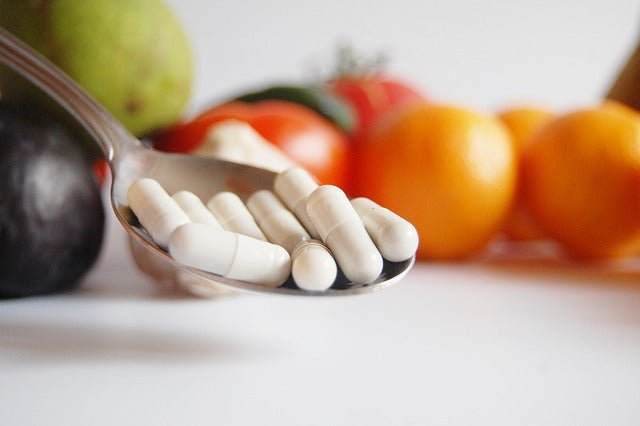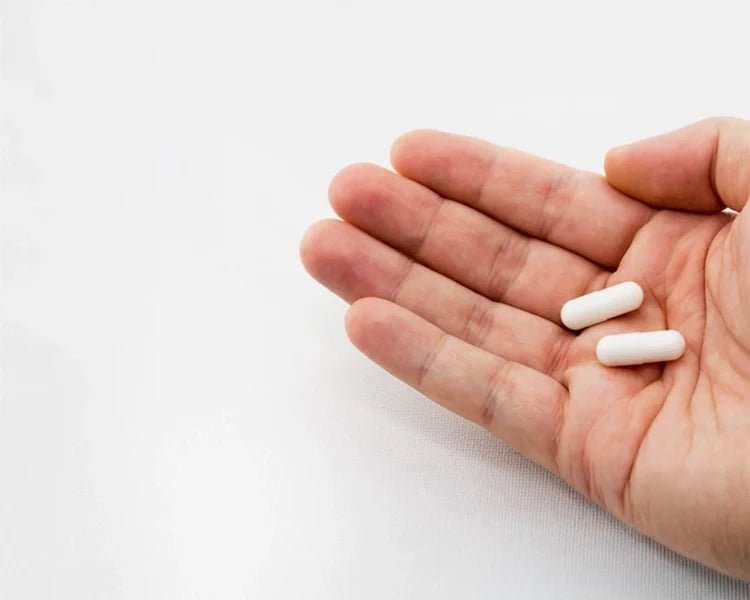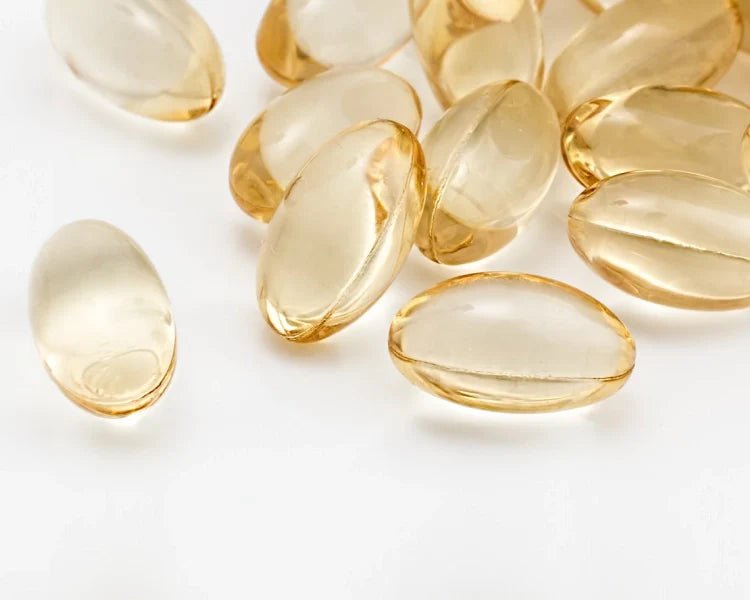Education
Selenium
Selenium is a trace mineral in the human diet. There is also little knowledge in society about the impact of this element on human health. It is definitely not as popular as magnesium or zinc, although it is equally necessary in our diet. Humanity became aware of the existence of selenium over two centuries ago, when it was isolated by the Swedish chemist Jacob Brezelius. What more do we know about him now? First of all, it is an essential component of enzymes involved in oxidation-reduction processes and cytochrome, thanks to which it protects cell membranes, and therefore the cells themselves, against oxidative stress. Hence its beneficial effect on the immune system. People suffering from any thyroid disorder have certainly come across information about its key role in the metabolism of this gland's hormones. The problem of male infertility allowed us to draw attention to the role of selenium in proper spermatogenesis, where this ingredient is necessary for the formation of sperm with proper structure and the desired motility. Less known properties of selenium include its influence on the proper functioning of the muscular system, including the heart muscle. They are so important that in regions of the world exposed to extreme deficiencies of this element, we are dealing with a specific cardiomyopathy (Keshan disease). We will also find information confirming the impact on the low birth weight of newborns whose mothers were deficient in this microelement. There are interesting reports about the effect of selenium on the nervous system, where deficiencies manifest themselves in mood declines. And finally, related to the antioxidant effect, it influences the development/inhibition of some cancer diseases, e.g. prostate, lung or colon cancer. Selenium deficiency may manifest itself through: - hair loss and brittle nails, - nervous system disorders (low mood, depression), - fatigue, - weakness of skeletal muscles and heart muscle, - weakened immunity, - thyroid abnormalities, - male fertility disorders. Where to look for selenium? The element is taken from the soil by plants, which become food for herbivorous animals. Theoretically, both animal and plant food can be its source. Foods recommended for deficiencies are most often: offal (kidneys), eggs, dairy products, sea fish, mushrooms, garlic and Brazil nuts. The latter, generally considered to be the richest source, obviously do not come from our region, and when buying them we may not be 100% sure whether they actually come from areas rich in this element. In practice, in Polish latitude, we deal with low selenium content in the soil, which results from the geographical location. The rocks from which the soil is formed in our native areas are very low in selenium. Additionally, the acidic nature of these soils makes it difficult for plants to absorb the said mineral. Supplementation may be the solution to replenish the deficiencies. The preparations available on the market include both organic forms (l-selenomethionine) and inorganic forms, e.g. sodium selenate. The daily recommended intake of selenium for adults is 55 mcg. However, supplements may contain a dose almost four times higher, up to 200 mcg. When supplementing selenium, it is worth remembering that it is a trace element for humans, which means that there is a small difference between a therapeutic and toxic dose. Therefore, despite potential deficiencies, when deciding on supplementation, it should be used very carefully, in accordance with the dictum of Paracelsus Everything is poison and nothing is poison. Only the dose makes a substance not a poison. Marta Wcześniak BIBLIOGRAPHY: Piotrowska "Content of selenium in cultivated soils of Poland", Roczniki Gleboznaczne T XXXX, No. 1, Warsaw 1984 Golonko, B. Matejczyk "Two faces of selenium, selected aspects of the biological activity of selenium" Civil and Environmental Engineering 9 (2018) Ratajczak, M. Gietka-Czemel "The role of Selenium in the human body" Advances in Medical Sciences 2016 XXXIX(12) Resolution No. 7/2021 of the Team for Dietary Supplements of 28/10/2021
Learn moreAre French fries and chips a health hazard?
Fried foods, especially those based on carbohydrate products, are an integral part of our diet. However, more and more research indicates that the frying process may produce acrylamide - a chemical compound that may pose a risk to human health. In this article, we will explore the health effects of acrylamide, the products in which it is present, and present medical sources that confirm this risk. Organizations such as the International Agency for Research on Cancer (IARC) and the World Health Organization (WHO) have classified acrylamide as a carcinogen. What is acrylamide? Acrylamide is a chemical compound produced in the process of thermal processing of carbohydrate products, such as potatoes, French fries, bread, as well as coffee and some cereal products. It is produced by the reaction of amino acids with sugars in the presence of high temperature. High concentrations of acrylamide can be found in burnt or heavily browned foods. Where is acrylamide found? Primarily in carbohydrate products subjected to high temperatures during frying or baking. Examples of products include: French fries, chips, potato pancakes, bread, cookies, roasted coffee. Acrylamide in research Scientific research and assessments by health institutions clearly emphasize the potential danger associated with acrylamide. If possible, it is worth limiting the consumption of heavily burnt or roasted foods to minimize the risk of exposure to this carcinogenic substance. Deep frying carbohydrate products, although providing culinary pleasure, leads to the formation of acrylamide, a substance harmful to human health. To reduce the risk, it is worth choosing less burnt and more delicately prepared foods. Marta Wcześniak Medical Sources and Research: EFSA (European Food Safety Authority). (2015). EFSA statement on the presence of acrylamide in food. Tareke, E., Rydberg, P., Karlsson, P., Eriksson, S., & Törnqvist, M. (2002). Acrylamide: a cooking carcinogen? National Cancer Institute. (2020). Acrylamide and Cancer Risk. National Toxicology Program. (2021). Report on Carcinogens, 15th Edition.
Learn morePainkillers and health
Year by year, sales statistics of painkillers increase, according to many of them, in recent years by up to 250%! Pain is an inherent part of the human experience, and pain medications are often the first choice for relieving symptoms. However, their excessive and regular use may have adverse consequences for human health. It is worth understanding the different types of painkillers, their potential side effects and the causes of pain in order to approach the topic responsibly. Types of Painkillers: NSAIDs (non-steroidal anti-inflammatory drugs): Examples are ibuprofen, diclofenac. They have anti-inflammatory and analgesic effects by inhibiting enzymes responsible for inflammation. They may cause gastrointestinal problems. SIDE EFFECTS: May cause gastrointestinal problems, ulceration, bleeding. Paracetamol: Has an analgesic and antipyretic effect. Its excess can damage the liver. SIDE EFFECTS: Too high a dose or given for too long may damage the liver. Opioids: Strong painkillers such as morphine or oxycodone. They can lead to addiction and have a depressing effect on the respiratory system. SIDE EFFECTS: Risk of addiction, respiratory depression, drowsiness. DON'T IGNORE THE PAIN! Pain can be a signal from the body that something is wrong. Pain symptoms in the head, joints, spine or abdomen may be caused by various reasons, such as injuries, infections, chronic diseases or improper habits. Ignoring pain can worsen your condition and delay proper diagnosis. DO YOU EXPERIENCE PAIN REGULARLY? Consult a doctor - pain is intense, frequent or persistent, it is worth consulting a doctor to rule out serious health problems. ATTENTION! Don't overuse painkillers: Use medications only as directed by your doctor or as directed on the package. Adopt healthy habits - a healthy diet, regular physical activity and avoiding stress can help reduce pain; in many cases, recurrent weakness, nausea or headaches result from DEHYDRATION or lack of adequate food during the day. Remember that a healthy approach to pain involves recognizing its cause, not just masking the symptoms with painkillers. When in doubt, it is always a good idea to consult your doctor to ensure that you receive appropriate medical care. Mata Wcześniak Bibliography: American Heart Association. (2020). Nonsteroidal Anti-Inflammatory Drugs (NSAIDs). National Institute on Drug Abuse. (2020). Opioids. Mayo Clinic. (2021). Pain Medications: Prescription pain relievers, OTC pain relievers and topical products. Harvard Health Publishing. (2019). The hazards of too much acetaminophen. Mayo Clinic. (2021). Pain Management: Pain basics. Harvard Health Publishing. (2020). When Pain Relievers Cause More Headaches.
Learn moreVitamin D and cancer
Vitamin D, as we know, is converted in the body to its active (hormonal) form (calcitriol). This hormone binds to a specific receptor (VDR) that transports it into the cell nucleus. There , it regulates over 300 genes . The deficiency of vitamin D3 is a modern global health problem. Hundreds of studies have proven over the last 20 years that the importance of vitamin D3 goes far beyond the metabolism of calcium and phosphorus. The deficiency of this vitamin is an important factor for coronary heart disease, hypertension, stroke, diabetes, multiple sclerosis, rheumatoid arthritis, irritable bowel diseases, chronic pain and even psychiatric problems. Later, research articles were published that emphasized the role of vitamin D3 deficiency in various malignancies, especially lung, colon, prostate, bladder, and breast cancer, as well as lymphoma. In one study of 25,871 patients, supplementation with vitamin D3 reduced the risk for metastatic cancer and death by 17%. The risk was reduced by as much as 38% if the patients also maintained a healthy weight 1 . Of a particular note, the participants received only 2,000 IU of vitamin D3 daily and did not measure its blood levels. Despite that, a significant benefit was still found. Other publications revealed even more striking effects. The study of 2018 showed that women having serum vitamin D3 level at or over 60 ng/mL (150 nmol/L) had an 82% lower risk of breast cancer compared to those in whom the levels were below 20 ng/mL (50 nmol /L) 2 . An UK study demonstrated that having a serum vitamin D3 level higher than 60 ng/mL resulted in an 83% lower breast cancer risk 3 . A meta-analysis of 70 studies in breast cancer found that, for each 2 ng/mL (5 nmol/L) increase in vitamin D3 level, there was a corresponding 6% decrease in the incidence of breast cancer 4 . There are plenty or similar research publications proving one simple fact: immunomodulatory power of vitamin D3 acts, beyond other aspects, as an efficient way of raising anti-cancer immunity. prof. Igor G. Bondarenko References Chandler PD et al. Effect of vitamin D3 supplements on development of advanced cancer: A secondary analysis of the VITAL randomized clinical trial. JAMA Network Open 2020; 3(11): e2025850. McDonnell SL et al. Breast cancer risk marked lower with serum 25-hydroxyvitamin D concentrations >60 vs < 20 ng/ml (150 vs 50 nmol/L): Pooled analysis of two randomized trials and a prospective cohort. PLoS ONE 2018, 13(6): e0199265 . Lowe LC et al. Plasma 25-hydroxy vitamin D concentrations, vitamin D receptor genotype and breast cancer risk in a UK Caucasian population. J Cancer 2005, 41(8): 1164-1169. Song D. et al. Vitamin D intake, blood vitamin D levels, and the risk of breast cancer: a dose-response meta-analysis of observational studies. Aging 2019; 11(24): 12708-12732.
Learn moreSleep disorders and their impact on the course and control of diabetes
Diabetes is a very common disease nowadays. It is called a civilization disease or a non-communicable epidemic of the 21st century. About 3 million people suffer from the disease in Poland, and approximately 440 million in the world, which translates into 1.6 million deaths annually due to it. The disease increases mortality but also deteriorates the quality of life. Diabetes that is improperly treated and poorly controlled causes very serious complications, mainly cardiac ones - more frequent heart attacks, strokes, atherosclerosis of arterial vessels, and, as a consequence of these changes, an increase in the number of lower limb amputations, cases of kidney failure, and diabetic retinopathy. Peripheral polyneuropathy is a very painful symptom, affecting mainly the feet and significantly worsening the patient's quality of life. Currently, an individual approach to a patient with diabetes is emphasized, because each case is different. Each patient struggles with diabetes at different stages and degrees of advancement, uses different antidiabetic drugs or insulin therapy, has a different lifestyle, work pattern, ability to perform physical activity or follow an appropriate diet, which is so important in diabetes. Despite increasingly better treatment methods, modern drugs and insulins, new insulin pumps and continuous glucose monitoring (CGM) systems, good diabetes control and avoiding hyper- or hypoglycemia are still influenced by many elements of the patient's daily life. Regularity, repetition, consistency of eating, working and resting times, avoiding excessive stress, worrying, living in a hurry, as well as the ability to get good and healthy sleep are very important. The latest diabetes recommendations of the PTD emphasize the role of sleep, its duration and quality on the course of diabetes. Sleep disorders affect diabetes in two ways. On the one hand, they worsen its balance, causing morning hyperglycemia, increased insulin resistance, and certain neurological disorders that persist during the day regarding concentration, memory, and emotion. On the other hand, diabetes, especially insulin therapy or traditional, older drugs such as sulfonylurea derivatives, generate glycemic disturbances at night and impair the quality of sleep. Sleep disorders in patients with diabetes and their adverse impact on health parameters The journal Diabetologia conducted a meta-analysis on the incidence of sleep disorders in type 2 diabetes and their impact on factors such as glycemic control, micro and macrovascular complications, depression, mortality and quality of life. The authors, based on the available literature in the PubMed database, asked the extent to which the treatment of sleep disorders in patients with type 2 diabetes can improve the mentioned health factors. The review included both observational and experimental studies. The results showed that insomnia (39%), obstructive sleep apnea (55-86%), and restless legs syndrome (8-45%) occurred more often than in the general population without diabetes. Moreover, it has been shown that sleep disorders have a significantly negative impact on glycemic control and increase the percentage of glycated hemoglobin HbA1c. The reason for the increase in glycemia after a bad night's sleep is believed to be an increase in the amount of stress hormones, mainly cortisol, which causes metabolic disorders, insulin resistance, slower metabolism, difficulty maintaining optimal body weight, and additional snacking at night or in the morning. Repeated sleepless nights increase your cardiovascular risk. It has been proven that people who sleep little have higher levels of CRP (acute phase protein), which causes a greater risk of inflammation, weakened immunity, a greater risk of obesity, diabetes, hypertension, depression, and cancer. Already the first sleepless night causes memory and concentration disorders, weakened reflexes and the ability to react, anticipate, make decisions and various emotional disorders. Each additional one increases the risk and intensity of the above-mentioned disorders. Such a person may have impaired driving skills, limited assessment of the consequences of actions and reduced foresight, which may contribute to an increased risk of road accidents or accidents at work. The body returns to full balance only after three consecutive nights of sleep. Treating sleep disorders may therefore play an important role in preventing the progression of diabetes. Conventional therapies such as weight loss, education, and cognitive behavioral therapy appear to be effective in improving sleep and health outcomes in patients with diabetes. Sleeping medications should only be used in more severe cases and for short periods of time. For this purpose, you can use herbal medicines that have a relaxing and sleep-inducing effect, as well as melatonin. In conclusion, it can be stated that because the treatment of sleep disorders can prevent deterioration of diabetes control, sleep disorders should be recognized and treated in patients with diabetes in order to ultimately improve health and quality of life. Diabetes and drug therapy as factors worsening sleep quality A diabetic patient using insulin therapy, especially intensive 3-4 injections a day, and also treated with an insulin pump or older generation drugs, such as sulfonylurea derivatives, is more exposed to fluctuations in glycemia at night, which may manifest as: Hyperglycemia, i.e. too high blood glucose level >180 mg, with symptoms of difficulty falling asleep, more frequent urination - nocturia and large amounts of urine excreted (polyuria), Hypoglycemia, i.e. too low glycemia level <70 mg/dl. It may cause waking up at night or waking up with heavy sweats, deterioration of sleep quality, problems with waking up, feeling tired, dull, and irritable during the day. To avoid these problems, you should choose the appropriate meal for dinner, especially the amount of carbohydrates in the meal, and adjust the appropriate dose of insulin depending on the glycemia before the meal, e.g. around 6:00 p.m., and basal insulin, usually administered around 10:00 p.m. Currently, with advanced devices for measuring CGM (Continuous glucose monitoring system), new insulin pumps with a hybrid system and closed loop, significant nocturnal hypo- or hyperglycemia is becoming less common, and patients have a better quality of life and avoid dangerous complications of diabetes. . To ensure comfortable sleep, remember the basic rules, such as the appropriate temperature in the bedroom (about 18 degrees Celsius), airing the room, properly selecting a sleeping pillow and mattress, and using headbands or earplugs. In the evening, it is important to turn off multimedia and avoid intense exercise late at night. It is worth remembering about fixed sleep times and avoiding shift work at night. To sum up, detecting and treating sleep disorders is not usually part of standard patient care in a diabetes office, which is often due to the time limit of such a visit, but drawing attention to this problem in the doctor's office and ensuring the patient's good sleep contributes significantly to improving diabetes control. , and sometimes to prevent it and reduce the risk of other diseases and health problems mentioned in this article. Krzysztof Chabros Diabetologist specialist Literature: Urszula Cieślik-Guerra, Sleep disorders as a risk factor for type 2 diabetes, " Fam Med Prim Care Rev11.3 (2009), pp. 574-576. Clinical recommendations for the management of patients with diabetes 2022. Position of the Polish Diabetes Association. Current Topics in Diabetes, 2022;2 (1) p. 26.
Learn moreThe role of a dietitian in pre- and post-cancer care
People with experience of cancer are a special group of patients who require therapeutic support from various specialists. Among them, a complementary but important role is played by a DIETITIC who, working with the sick person, will support the patient's treatment and recovery process, strive to improve the quality of his life and avoid recurrence in the future. Nutrition education The basic role of a dietitian in pre-cancer care is nutritional education aimed at explaining the relationship between the diet, quantity, quality and type of products consumed as well as the food preparation technique used and the risk of developing lifestyle diseases, including cancer. The dietitian will explain step by step what the assumptions of the anti-cancer diet are, indicate the optimal energy and macronutrient value of the diet, teach how to compose meals, verify the need for supplementation and, above all, answer the patient's questions. It will also motivate you to improve your eating habits. Depending on the dietitian's work model and the patient's needs, each specialist will conduct education slightly differently, using various tools, such as: a nutritional plan, a list of recommendations, a table facilitating the selection of products, or even accompanying people while shopping for food products. Taking a holistic approach to cancer prevention into account, the dietitian will pay attention to other lifestyle elements: such as physical activity, avoiding stimulants, working on stress control and "good sleep". Identification of nutritional status abnormalities A person's nutritional status affects both the risk of developing cancer and the final outcome of their treatment. On the one hand, excessive body weight, especially abdominal obesity, significantly increases the risk of cancer, and on the other, it is observed that many patients struggle with malnutrition already at the time of diagnosis of cancer. Epidemiological observations show that poor nutritional status of a patient worsens his response and tolerance to treatment, accelerates the development of complications, impairs fitness and negatively affects the quality of life and chances of survival. It is estimated that in up to 20% of patients, the direct cause of death is not cancer, but the resulting malnutrition. Therefore, one of the basic activities that a dietitian performs during a visit to the office is to assess the patient's nutritional status. It can be done using various methods: weighing and measuring the patient, analyzing his laboratory test results or conducting a detailed interview. Dietitians usually use specialized weight and body composition analyzers in their work, operating on the principle of bioelectrical impedance or air plethysmography. These analyzes are non-invasive, easy to perform and applicable to most patients, and provide information not only about body weight, but above all about the estimated amount of muscle mass, water, fat tissue, protein and minerals that make up the body. Monitoring changes in these components over time allows you to better control your nutritional status and select diet therapy. Although the measurement of body circumference does not reflect its composition, due to its simplicity, it is usually performed as a complement to the patient's anthropometric assessment. Improper nutritional status is not only about too low or high body weight. This is also a situation in which nutritional deficiencies are observed - these will be verified by a dietitian both on the basis of blood tests and by conducting a health and nutritional interview. ATTENTION!!! A dietitian is not authorized to make a diagnosis. His analysis of medical records and laboratory test results serves to properly plan dietary therapy. However, if the dietitian notices anything disturbing in the patient's test results, he will definitely refer him to an appropriate specialist. Development of a personalized diet therapy plan The key element of cooperation between a dietitian and a patient with experience of cancer is to specify the assumptions of the diet and, in situations requiring it, to balance the menu. Before developing a diet therapy plan, the dietitian conducts an extensive interview with the patient, asking him about various aspects of eating. He asks questions about the amount and type of food products that the patient usually eats, as well as issues related to meal preparation, time of consumption, preferences and organizational possibilities. Based on the nutritional interview, it is easier for the dietitian to personalize recommendations or menus, identify incorrect eating habits and prioritize the order in which they should be changed. Usually, the nutritional interview is preceded by questions about the occurrence of chronic diseases (current and past), disorders, abnormalities in laboratory tests, medications and supplements taken. Information about allergies or observed food intolerances is also important. Based on the health interview, the dietitian not only makes a decision regarding the assumptions of diet therapy, but also tries to predict what possible problems, e.g. nutrient deficiencies, gastrointestinal ailments, the patient may encounter in connection with the undertaken/completed treatment. The dietitian will also assess whether a given person is able to meet the demand for calories and other nutrients in a traditional way (with conventional meals). If it is determined that the patient cannot eat sufficient amounts of food, the dietitian will help select the optimal nutritional preparation (so-called medical nutrition, oral food supplements). Help in the fight against ailments and side effects of treatment Most patients undergoing chemotherapy, radiotherapy or surgery experience ailments that significantly impair their daily functioning, affect their diet, and thus increase the risk of malnutrition. These may include primarily: - nausea, vomiting, - bowel rhythm disturbances, - loss of appetite, - pain when swallowing or swallowing problems, - change in the sense of taste and smell, - decreased amount of saliva produced, dry mouth, - food intolerances, - metabolic disorders. The role of a dietitian is to help in selecting food products that will be best tolerated in a given situation and to provide education on techniques for dealing with ailments. Due to the fact that therapeutic diets are often associated by patients with visually and tasteless meals, many specialists devote a lot of attention to convincing the patient (and his family) to experiment in the kitchen, test new recipes and pay attention to the appearance and form of serving the dish. The role of a dietitian is also to support and motivate patients throughout the entire period of introducing changes to their diet. Małgorzata Moszak Literature: Muscaritoli M, Arends J, Bachmann P, Baracos V, Barthelemy N, Bertz H, Bozzetti F, Hütterer E, Isenring E, Kaasa S, Krznaric Z, Laird B, Larsson M, Laviano A, Mühlebach S, Oldervoll L, Ravasco P , Solheim TS, Strasser F, de van der Schueren M, Preiser JC, Bischoff SC. ESPEN practical guideline: Clinical nutrition in cancer. Clin Nutr. 2021 May;40(5):2898-2913. doi: 10.1016/j.clnu.2021.02.005. Beirer, A. Malnutrition and cancer, diagnosis and treatment. memo 14 , 168–173 (2021). https://doi.org/10.1007/s12254-020-00672-3
Learn moreMedicine or dietary supplement? What to choose?
Mr. Magister, I would like some magnesium "in the form of a MEDICINE". A conversation at the pharmacy window often begins with this phrase. Then the patient begins a long analysis of the composition and packaging to be 100% sure that there is no inscription "dietary supplement" on it. The pharmacist often avoids talking about this topic, but should still be prepared to talk to the patient. The problem of distinguishing and comparing drugs and dietary supplements is quite difficult. Both product categories are placed on adjacent stands and have similar, and often the same, composition. So what is the mystery and why do patients try so hard to buy a drug and not a dietary supplement? Let's start with individual definitions. A medicinal product is a substance or mixture of substances presented as having properties for the prevention or treatment of diseases occurring in humans or animals or administered for the purpose of making a diagnosis or for the purpose of restoring, improving or modifying the physiological functions of the body through pharmacological, immunological or metabolic action. (Pharmaceutical Law of September 6, 2001, Chapter 1 Art.2 Point 32.) The definition contained in the Act clearly states that a drug (medicinal product) prevents, cures, improves or modifies the physiological functions of the body. Whereas: Dietary supplement - a food intended to supplement a normal diet, being a concentrated source of vitamins or minerals or other substances having a nutritional or other physiological effect, single or combined, placed on the market in a form enabling dosing, in the form of: capsules, tablets, dragees and in other similar forms, sachets with powder, ampoules with liquid, dropper bottles and other similar forms of liquids and powders intended for consumption in small, measured unit quantities, excluding products having the properties of a medicinal product within the meaning of the provisions of pharmaceutical law. (UST AWA of August 25, 2006 on food and nutrition safety, SECTION I, Art. 3 point 3, ppk39) According to this definition, a dietary supplement is a food that is intended to supplement the normal diet with vitamins, minerals and "other" substances. At first glance you can see the difference, but is it really? Looking at the last part of the definition: excluding products with the properties of a medicinal product within the meaning of pharmaceutical law, we reach the point where it is impossible to distinguish a dietary supplement from a drug. What is the difference between a medicinal product containing 2000 IU of vitamin D3 in the form of cholecalciferol and a dietary supplement containing exactly the same in the same form, but in capsules? There are several differences between a drug and a dietary supplement, but neither side achieves a clear competitive advantage. The first issue concerns legal aspects. Various institutions register both product groups. Drug registration is handled by URL (Drug Registration Office). It does this on the basis of many tests and certificates. However, the Chief Pharmaceutical Inspector is responsible for marketing authorization in the country. Dietary supplements are also officially registered by the Chief Sanitary Inspector (GIS) on the basis of an application submitted by the entrepreneur. Therefore, it is not the law that supplements are not subject to control, because the GIS may refuse to register or, in case of uncertainty, may ask for an opinion from the URL. The registration procedure for dietary supplements is shorter and easier to carry out, which is why many drug manufacturers register their next products in this category. The second thing is the doses of individual ingredients. Based on the dose definitions, substances in a drug have a curative or preventive effect, while in a supplement they have a nutritional effect. No less surprising is the fact of the existence of vitamin C - a drug in doses of 200 and 500 mg in the presence of the same vitamin - a supplement in doses of 1000 and 2000 mg. Questions arise about the body's actual needs, the dose that produces a therapeutic or nutritional effect, and the dose that is too high to be safe. Another aspect concerns the origin of the ingredients contained in the products. Due to high standardization requirements and the purity of substances, synthetic substances obtained through chemical reactions are often used in medicinal products. Dietary supplements often contain ingredients of natural origin, which seems to be a healthier solution and more adapted to the living organism. They also contain plant ingredients and their extracts. Sometimes dietary supplements contain plant ingredients that are not found in our climate or in Europe, but which have a proven positive effect on health and fitness. Further differences concern promotion and advertising. No elements of the packaging, names or advertising of supplements may suggest medicinal properties. Each package must also have the description "DIETARY SUPPLEMENT". Every day we are attacked by advertisements for medicines and supplements, so much so that it is difficult to know what and whether it is worth buying to support our health. We consume large amounts of medicines and dietary supplements every day. This is due to the fact that the availability of supplements is very high, advertising in the media is intense, and society is taught to respond to changes in its health by purchasing new preparations. Supplements are used to improve the condition of hair, nails, skin, eyes, joints, etc. We supplement vitamins, minerals and herbs using multi-ingredient products. Therefore, it is important to know the exact composition of a given preparation. There is a high probability that several preparations will contain the same ingredients and by taking a whole range of products we will provide too high doses of the mentioned vitamins or minerals. It is also worth remembering that the most important source of supplementation is food, i.e. what we eat. So how should you approach the use of supplements to make it safe? Let us remember that choosing a drug as a safe form will not always meet the nutritional and health needs of the body. On the other hand, not all supplement manufacturers meet the quality standards of their products. Taking this summary into account, you should follow a few rules to achieve the appropriate nutritional effect while maintaining safety. Here are the rules worth following Let's choose high-end supplements - there are several leading companies on the market. Some of them can be found on our website. Companies with extensive experience, certified products and production standards such as GMP, ISO, etc. The most advantageous offers are provided by companies that grow medicinal herbs themselves and produce vitamin and mineral ingredients instead of mass purchases from suppliers. Let's use only those substances that we need - it's best to discuss the selection of ingredients with a specialist. Do not use supplements recommended by third parties. The appropriate selection of supplements in oncological diseases and post-oncological therapies is extremely important. Many ingredients have the ability to stimulate excessive cell growth. If possible, use single-component or multi-component preparations. We will then avoid the possibility of duplicating doses of the same substance. Let's ask a specialist when and how to take a given product. Often, the absorption of the substance and the effect of the entire preparation depend on the time of day or the meal we take. In light of these assumptions, I believe that the use of dietary supplements can be safe and bring good results. By choosing only medicinal products, we will not achieve long-term effects and visible results. A well-balanced and well-thought-out combination of medicine and dietary supplement can achieve very good results. Let's take the medicines that are necessary for us, let's take the dietary supplements that we need, but let's not forget about proper nutritious food, including fruit and vegetables. Krzysztof Juszkiewicz
Learn moreWhen is it worth visiting a gastroenterologist?
Digestive health plays a key role in an individual's overall health. Our digestive system is not only responsible for the absorption of nutrients, but also plays an important role in the immune system and metabolism. However, its improper functioning can lead to a variety of health problems. Therefore, understanding the importance of digestive health and being aware of signals that may indicate the need to consult a gastroenterologist are extremely important for maintaining full health and well-being. Symptoms that may indicate the need to visit a gastroenterologist are usually related to gastrointestinal problems and can be diverse. Among them stand out: Abdominal pain, which may occur in various places and have a different nature (dull, stabbing, cramping). If the pain persists for a long time or occurs regularly, it may be a sign that there is a problem in the digestive system that requires evaluation by a specialist. Heartburn, i.e. burning or burning sensation in the esophagus and chest area. Its frequent occurrence may indicate gastroesophageal reflux disease, i.e. the reflux of stomach contents into the esophagus, leading to damage to the mucous membrane. Recurrent damage and inflammation predispose to cancer processes, therefore faster diagnosis and initiation of treatment are associated with a better prognosis. Bloating, nausea, vomiting, diarrhea or constipation may indicate various conditions such as irritable bowel syndrome, inflammatory bowel disease, intestinal infections or other digestive disorders. Sudden and unintentional weight loss. If you noticeably lose weight despite maintaining a normal appetite and a healthy lifestyle, this may be a reason to consult a gastroenterologist. Weight loss can be caused by various digestive disorders, such as inflammatory bowel disease, celiac disease, colon cancer or other serious disorders, but cancer can also be the cause. Changes in stool consistency may be an important signal of health problems other than cancer. If continuous diarrhea or constipation is observed, as well as changes in the color, consistency or appearance of the stool, consultation with a gastroenterologist is recommended. This may suggest not cancer but problems such as irritable bowel syndrome, Crohn's disease, ulcerative colitis or other diseases that require diagnosis in a doctor's office. Prevalence of cancer of the digestive system in the family. Separate recommendations for such patients are currently in force and are still being developed. These most often include suggestions for accelerated tests detecting early signals of these diseases and performing an extended panel of genetic tests. Therefore, the presence of cancer or autoimmune diseases in the family should prompt other relatives to take appropriate preventive measures and monitor their health. Environmental factors such as diet, lifestyle, stress factors and infections also play an important role in the occurrence of digestive system cancers. Eating habits and lifestyles may be similar within families, contributing to a similar environment that may promote the development of these conditions. Regular examinations and practicing healthy eating and lifestyle habits can help prevent or detect these diseases early. ATTENTION! If any symptoms occur, it is extremely important not to delay visiting a gastroenterologist. Early recognition and treatment of serious digestive problems, including cancer, can be crucial to continuing to lead a healthy life. Adam Trzciński
Learn moreThe role of physiotherapy in reducing inflammation in patients
Physiotherapy, as an integral part of medical rehabilitation, plays a key role in managing inflammation in patients. Inflammation is often associated with a number of diseases, including rheumatoid arthritis and even cardiovascular disease. Physical therapy can help relieve symptoms and speed up the healing process. Mechanisms of action Physiotherapy uses various methods and techniques that help reduce inflammation, such as manual therapy, therapeutic exercises, heat and cold therapy, ultrasound and electrotherapy. These techniques are intended to reduce pain, improve mobility, increase muscle strength, and improve the overall performance of the body. Manual therapy Manual therapy, which includes massage and joint mobilization, helps reduce inflammation by improving circulation and reducing muscle tension. Improving circulation helps deliver nutrients to the inflamed area and speeds up the removal of waste products, which speeds up the healing process. Therapeutic exercises Therapeutic exercises are a key element of physiotherapy. They help maintain and improve range of motion, increase muscle strength and improve the overall performance of the body. Regular exercise can also help reduce inflammation by increasing the production of the body's natural pain-relieving and anti-inflammatory substances, such as endorphins. Heat and cold therapy Heat and cold therapy are often used to reduce inflammation. Heat helps increase blood circulation, which speeds up the healing process, while cold helps reduce pain and swelling. Electrotherapy and ultrasound Electrotherapy and ultrasound are other popular techniques used in physical therapy. Electrotherapy uses electrical current to stimulate nerves and muscles, which helps reduce pain and swelling. Ultrasound, by producing a sound wave, can help reduce inflammation by improving blood circulation and stimulating healing processes. Physiotherapy is therefore a key element in the treatment and management of inflammation. By using appropriate techniques, physiotherapy helps reduce pain and swelling, increases range of motion and improves patients' quality of life. However, it is important to remember that physical therapy is part of a comprehensive treatment plan and should be used in conjunction with other forms of therapy such as anti-inflammatories and lifestyle changes. Patryk Pyrz
Learn more











